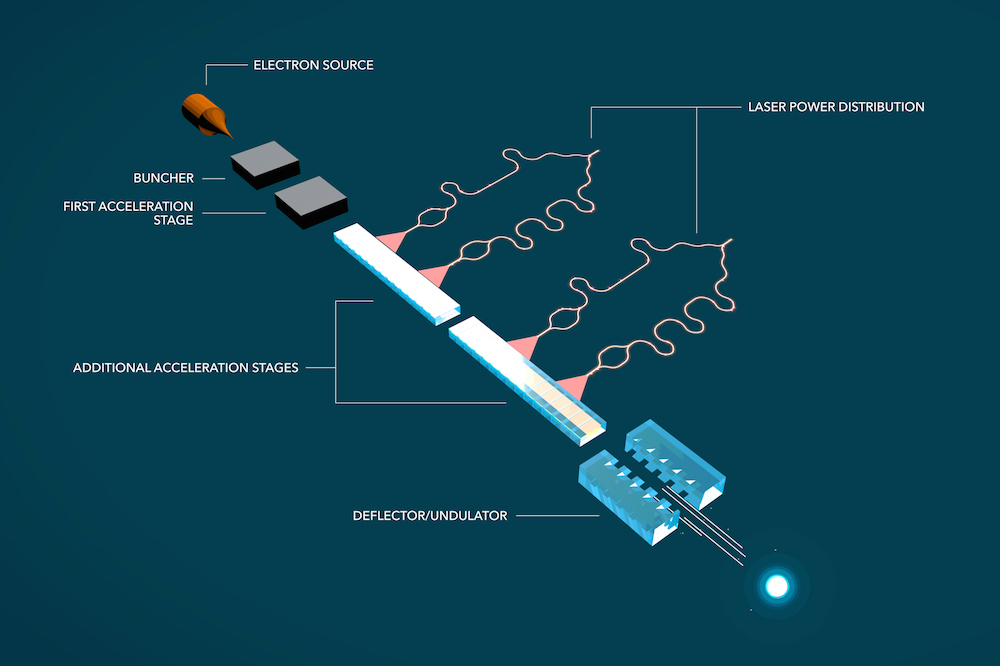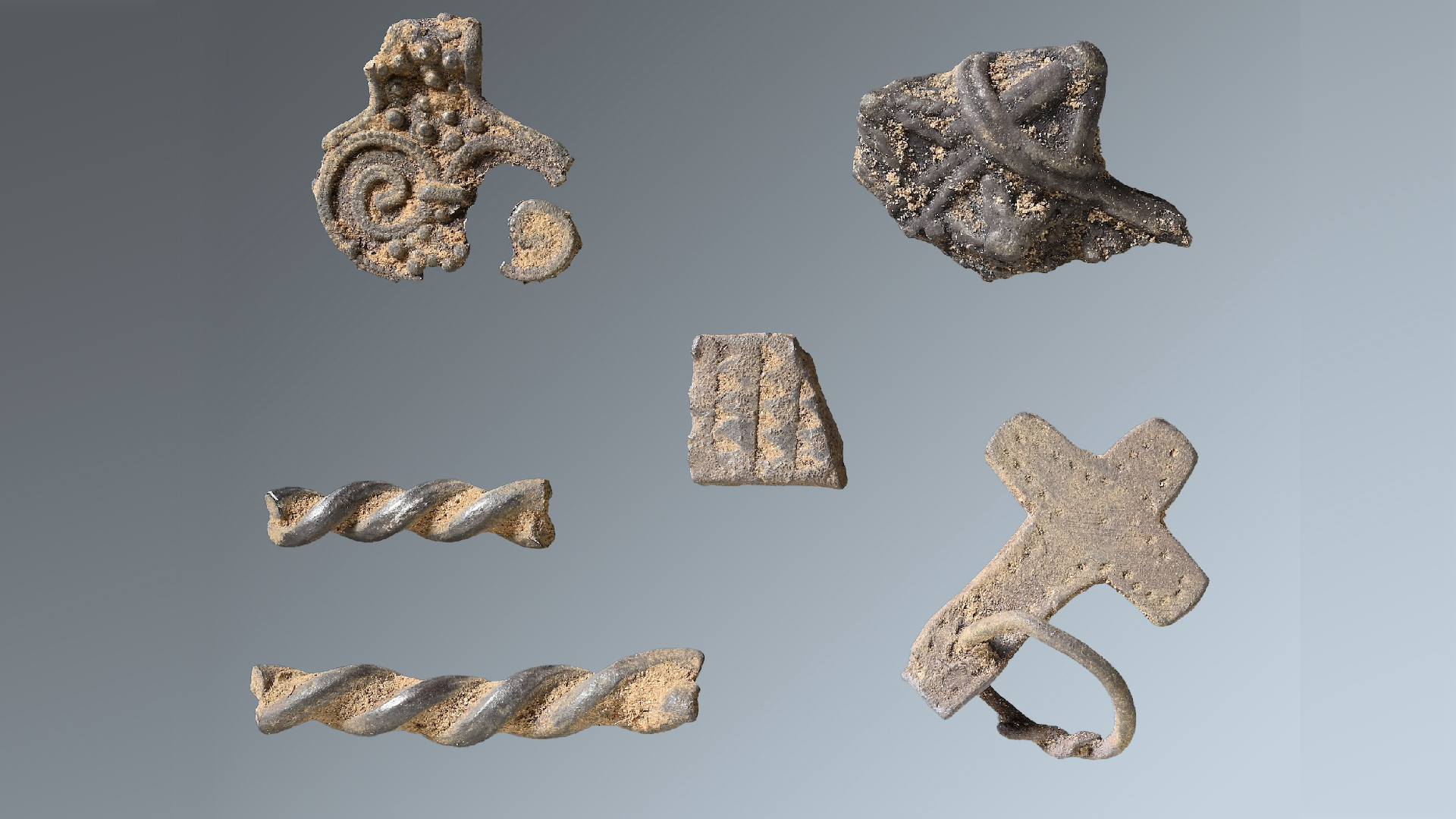
Scientists could soon develop particle accelerators that can fit into a shoebox, experts say.
The project, which is still in its infancy, would rely on lasers, rather than microwaves, to ramp particles to near light speed.
Using lasers, "you can accelerate particles in a shorter distance to get to a higher energy," said Joel England, a researcher at SLAC National Accelerator Laboratory in Menlo Park, California, and one of the principal researchers involved in the project. [See Photos of the World's Largest Atom Smasher]
The earliest forms of the technology would probably be used for medical physics and experiments to watch atoms in real time, experts say. But, if the new method pans out, it could eventually be scaled up to the world's largest atom smashers, and democratize the field of particle physics.
Thinking big and small
When it comes to particle accelerators, most physicists think big. Giant underground rings that span country borders. Abandoned mineshafts and subterranean fortresses buried deep in the bowels of the Earth. Tunnels long enough to extend from one end of Los Angeles to another. The most cutting-edge physics requires higher energies, and higher energies require longer distances to pick up speed.
But such ambitious endeavors are incredibly costly, and they mean that only a lucky few can perform certain particle-physics experiments. In fact, only about 30,000 accelerators exist worldwide, according to Symmetry Magazine. That may sound like a lot, but there's typically a huge line to use even lower-energy accelerators, England said. And lower-energy particle accelerators still require lots of space — a luxury few universities can afford, he added.
Sign up for the Live Science daily newsletter now
Get the world’s most fascinating discoveries delivered straight to your inbox.
But that's because particle colliders now rely on microwaves to boost particle energy, England said. Because microwaves have a long wavelength — between 0.04 inches and 39 inches (0.1 centimeters to 100 cm) — that means they take a longer space to boost a particle's energy.
Current microwave amplifiers in particle accelerators are similar to a microwave oven in some ways, England said.
"It's a cavity, it's an enclosed metal contraption that you pump microwave power into and it sets up a field in there," England said. "Instead of cooking your TV dinner, it produces a different type of field that has an electric component along the axis so that particles that have gone through there will see a kick."
Laser accelerator
But in recent years, laser technology has advanced by leaps and bounds. And because lasers have a much shorter wavelength (visible light has a wavelength that's between 400 nanometers and 700 nm), this means laser-driven accelerators could shrink considerably.
So, England and a wide array of colleagues have teamed up to design a laser-driven accelerator that can be printed onto a microchip. [Infographic: How Do Lasers Work?]
"The ultimate goal is to have all of the components that are needed in order to accelerate particles to useful energies, and to do all of that using the same sorts of devices on a single silicon wafer," England told Live Science.
Lasers would allow higher field intensities, because they would not damage the metal cavities like microwaves would. In addition, microfabrication could allow researchers to squish hundreds of accelerators in series on a single wafer, England said.
The team aims to have a working prototype in five years, and the project recently received millions of dollars in funding from the Gordon and Betty Moore Foundation to make that a reality. In the short term, the team hopes to generate smaller accelerator energies, equivalent to hospital radiation machines.
Eventually, the technology could be used to miniaturize the big colliders, such as the proposed International Linear Collider, a next-generation facility likely to be built in Japan that would hunt for entirely new forms of matter. It could also be used to repurpose existing accelerators, such as SLAC, said Robert Byer, an applied physicist at Stanford University who is also involved in the project.
"If we have a smaller accelerator, we're able to build a version of SLAC that's only 30 meters [98 feet] long, not 3 km [1.8 miles] long," Byer said. "You'd save a lot of money on tunnels and all that civil construction."
Lots of obstacles
However, getting to that point will take a lot of ingenuity.
For one, the team hasn't found a source of particles that can be fabricated using silicon wafer technology. This means the team will have to invent one, possibly looking at diamonds or silicon to emit electrons. Those electrons would then be nudged to high speed by a focused laser beam, Byer said.
To get the electrons in the incredibly focused beam that is needed for particle acceleration will likely require fabricating tiny waveguides into the chip. The researchers also have to find some way to couple the laser to the other devices on the chip, Byer said.
New applications
One of the most exciting possibilities is in the medical-treatment field, Byer said. Existing medical-radiation devices are giant contraptions that can take up an entire room, and radiation often bombards other parts of the body beyond the tumor.
But if medical-radiation devices could be miniaturized to fit into a catheter, doctors could irradiate tumors with heavy levels of radiation without affecting nearby tissue, Byer said. To do that, doctors would thread a catheter with a tiny accelerator into the body, and then pulse a tumor with electrons at a sufficiently low energy level that all the radiation would be stopped in the tumor tissue, Byer said.
Shoebox accelerators could also help reveal the mysterious inner workings of the atom. Lasers can now accelerate bunches of electrons at the attosecond timescale, which is about "the same time it takes an electron to orbit the nucleus of an atom," Byer said.
Using such tiny time slices, "we'll be able to take movies of electrons in the orbits of atoms. We'll be able to watch electrons move to make the bonds."
Follow Tia Ghose on Twitterand Google+. Follow Live Science @livescience, Facebook & Google+. Original article on Live Science.

Tia is the managing editor and was previously a senior writer for Live Science. Her work has appeared in Scientific American, Wired.com and other outlets. She holds a master's degree in bioengineering from the University of Washington, a graduate certificate in science writing from UC Santa Cruz and a bachelor's degree in mechanical engineering from the University of Texas at Austin. Tia was part of a team at the Milwaukee Journal Sentinel that published the Empty Cradles series on preterm births, which won multiple awards, including the 2012 Casey Medal for Meritorious Journalism.
